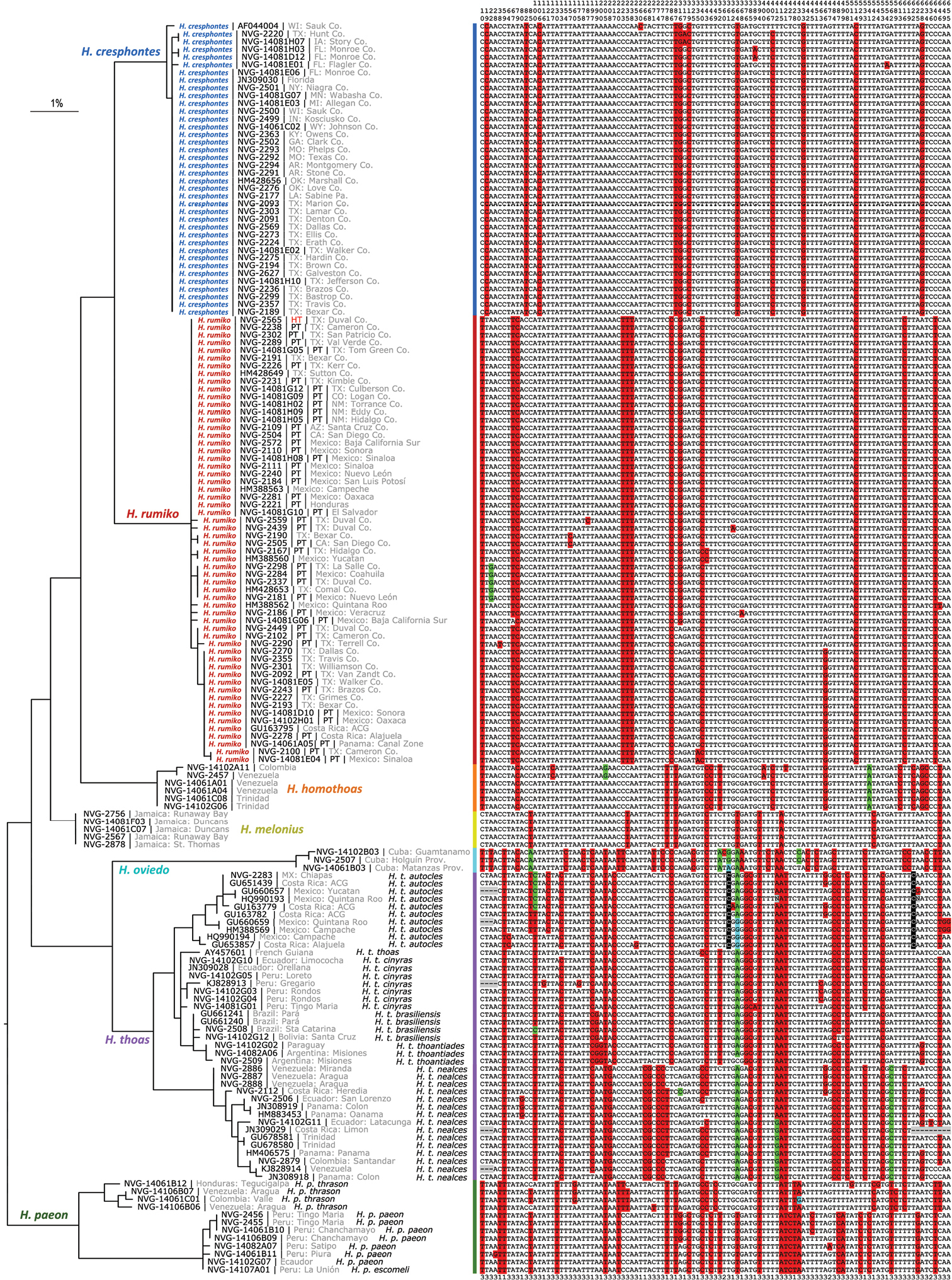
|
||
|
COI DNA-barcodes. Relationships between Heraclides specimens from the cresphontes, thoas and paeon groups in a form of RAxML (Stamatakis 2006) maximum likelihood tree (-m GTRGAMMA). Tree topology is the same as that of the distance tree (Fig. 15). The scale bar corresponding to about 1% difference in sequences is placed above the tree. Species names are shown by tree clades and are colored. Subspecies names are in black after localities. Sequences obtained in this work are labeled by “NVG-” number, those from GenBank (http://genbank.gov/) are labeled by accessions (letters and numbers, no dashes). Only selected sequences are shown (different haplotypes or different localities), data for additional NVG- specimens are in Supplementary Table 1. Barcode sequences with invariant positions removed are shown on the right. Positions are numbered according to the barcode sequence of H. rumiko holotype (see text) and the numbers are shown above the sequences (e.g., the first position shown is 10 and the last is 655). Most common nucleotide in each position is not highlighted, less common are highlighted in color, giving each group of sequences “barcode”-like appearance different for each species. Location of each position in a codon (first, second, or third base) is shown below the alignment. Specimens with sequences obtained from GenBank were not examined (except where a photograph was available) and their identification follows DNA barcode. |